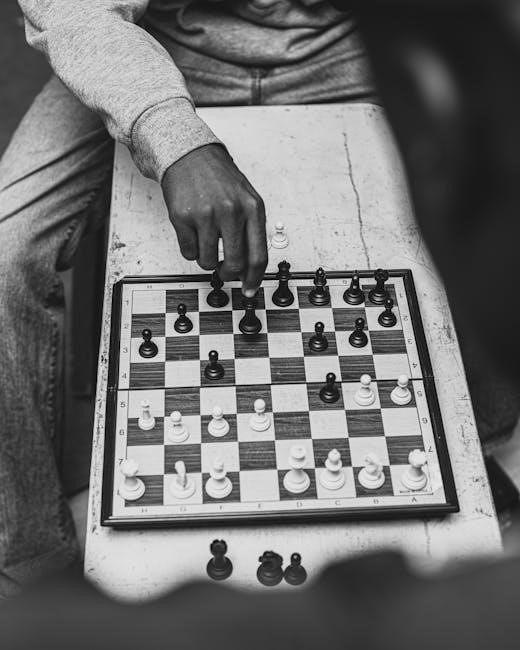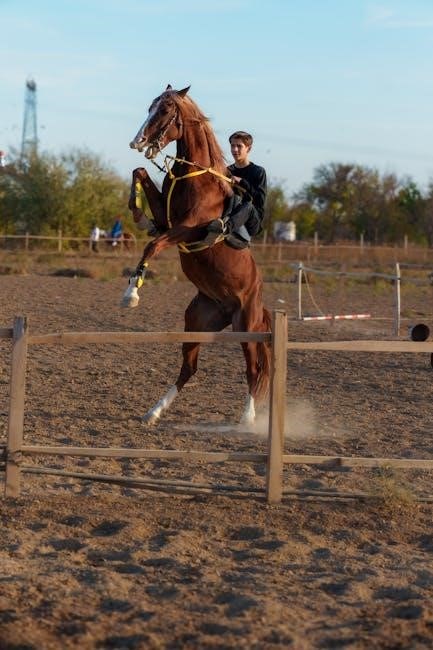Dialectical Behavior Therapy (DBT) is a therapeutic approach developed by Marsha Linehan, focusing on emotional regulation and coping skills. The STOP skill, a key DBT technique, helps individuals manage emotions and prevent impulsive reactions by pausing, reflecting, and responding mindfully in crisis situations. Available as PDF worksheets, it guides users through the STOP steps: Stop, Take a step back, Observe, and Proceed mindfully, offering a practical tool for emotional distress.

What is the STOP Skill?
The STOP skill, from Dialectical Behavior Therapy (DBT), is a distress tolerance technique helping individuals manage emotions and impulsive reactions. It involves four steps: Stop, Take a step back, Observe, and Proceed mindfully. Available as PDF worksheets, it provides a structured guide for emotional regulation and crisis situations.
2.1 S: Stop
The first step in the STOP skill is to immediately stop what you’re doing when you feel overwhelmed or triggered. This means freezing your actions and pausing physically and mentally. The goal is to create a moment of space between your emotions and reactions, preventing impulsive decisions. By stopping, you break the automatic response cycle, allowing yourself time to think before acting. This step is crucial because it interrupts the impulse to react without thinking, which often escalates situations. It’s not about suppressing emotions but creating a brief pause to regain control. For example, if you feel angry or anxious, stopping might mean taking a deep breath or stepping away from the situation. This initial pause sets the stage for the next steps in the process. The S in STOP is the foundation of the skill, as it allows you to regain balance and prepare for mindful action. Without stopping, it’s easy to get swept up in emotions and act impulsively, leading to regrettable consequences. This step is simple but powerful, helping you take charge of your reactions and respond more thoughtfully to challenging moments.
2.2 T: Take a Step Back
The second step in the STOP skill is to take a step back, both physically and emotionally, from the situation. This creates distance, helping you avoid reacting impulsively. By stepping back, you reduce immediate reactivity and gain space to assess the situation more clearly. This step is about disengaging from the emotional intensity of the moment, allowing you to regain control and perspective. It’s not about avoiding the problem but creating a moment to think before acting. For example, taking a few deep breaths, stepping away, or mentally detaching can help you shift from reacting to responding. This step is crucial because it interrupts the cycle of emotional overload and impulsive behavior, giving you time to reflect. The T in STOP emphasizes the importance of physical and emotional distance to reduce escalation. By taking a step back, you prepare yourself to observe the situation more objectively, setting the stage for the next step in the process. This practice helps you move from automatic reactions to mindful responses, fostering better decision-making and emotional regulation. It’s a simple yet powerful way to manage crises and reduce the likelihood of regrettable actions.
2.3 O: Observe
The third step in the STOP skill is to observe the situation, your thoughts, and your feelings without judgment. This step involves becoming fully present and aware of what is happening internally and externally. Observing helps you gather information, understand the context, and identify any patterns or triggers that may be contributing to your emotional state. It’s about noticing your physical sensations, emotions, and thoughts without reacting to them. For example, you might observe that your heart is racing, your mind is racing, or you feel a strong urge to act impulsively. By observing, you create space to understand the situation more clearly and make intentional decisions rather than reacting automatically. This step is about curiosity and awareness, not about trying to change or fix anything. Observing also helps you identify what skills or strategies might be most helpful in the moment. It’s a powerful way to slow down and gain perspective, allowing you to respond more mindfully rather than simply reacting. This step is essential for reducing emotional overwhelm and making choices that align with your values and goals; By observing, you set yourself up for success in the final step of the STOP skill.
2.4 P: Proceed Mindfully

The final step in the STOP skill is to proceed mindfully, meaning you take intentional and thoughtful action based on your observations. This step involves making a conscious decision about how to respond to the situation, rather than reacting impulsively. Proceeding mindfully requires you to stay grounded and focused, ensuring your actions align with your values and long-term goals. It’s about taking control of your behavior and choosing a response that is effective and skillful, rather than letting emotions dictate your actions. This step helps you avoid regretful decisions and reduces the likelihood of escalating the situation. By proceeding mindfully, you demonstrate self-control and responsibility, even in the face of intense emotions or triggers. This step also encourages you to use other DBT skills, such as distress tolerance or interpersonal effectiveness, to navigate the situation successfully. Ultimately, proceeding mindfully allows you to move forward with clarity and purpose, reducing emotional overwhelm and promoting a more balanced response. This step is crucial for maintaining emotional regulation and achieving positive outcomes in challenging situations.
Benefits of the STOP Skill
The STOP skill offers numerous benefits, including managing impulsive behaviors, reducing emotional overwhelm, and enhancing self-control. It helps individuals pause before reacting, leading to more thoughtful decisions and improved emotional regulation. This skill is particularly effective in crisis situations, promoting clarity and reducing regretful actions.
3.1 Managing Impulsive Behaviors
The STOP skill is particularly effective in managing impulsive behaviors by creating a pause between emotional triggers and reactions. This pause allows individuals to assess situations more clearly, reducing the likelihood of acting impulsively. For example, when emotions like anger or anxiety arise, the STOP skill encourages individuals to freeze their actions immediately, preventing harmful or regrettable decisions. By taking a step back, they can observe their thoughts and feelings without judgment, gaining perspective on the situation. This mindfulness helps individuals identify whether their impulsive reaction aligns with their long-term goals or values. The STOP skill is especially useful for those struggling with substance misuse, self-harm, or other impulsive behaviors, as it provides a structured approach to managing urges. Over time, practicing this skill can lead to improved self-control and more thoughtful decision-making. Worksheets and PDF guides are available to help individuals apply the STOP steps effectively, making it a practical tool for managing impulsivity in daily life.
3.2 Reducing Emotional Overwhelm

The STOP skill is a powerful tool for reducing emotional overwhelm by creating a moment of pause between stimulus and reaction. When emotions escalate, individuals often act impulsively, worsening the situation; The STOP skill interrupts this cycle, allowing time to regain control. By freezing the immediate reaction, individuals can step back and assess the situation more objectively. This pause helps prevent emotional overwhelm from escalating into crisis. The skill encourages deep breathing and observation of thoughts and feelings without judgment, fostering clarity and perspective. This mindful approach enables individuals to respond rather than react, reducing the intensity of emotional episodes. Over time, consistent practice of the STOP skill enhances emotional resilience, making it easier to navigate challenging situations calmly. Worksheets and PDF guides are available to help individuals master this technique, providing a structured approach to managing emotional overwhelm effectively.
3.3 Enhancing Self-Control
The STOP skill is a valuable tool for enhancing self-control, particularly in moments of intense emotions or impulsivity. By teaching individuals to pause and reflect before acting, this skill helps break the automatic reaction cycle. The first step, Stop, prevents impulsive actions, while T (Take a step back) creates physical and emotional distance from the trigger. This pause allows individuals to regain control over their reactions. The O (Observe) step encourages mindfulness, helping individuals identify their thoughts, feelings, and physical sensations without judgment. Finally, P (Proceed mindfully) guides individuals to respond thoughtfully rather than react impulsively. Over time, practicing the STOP skill strengthens self-control by improving emotional awareness and reducing the likelihood of regrettable actions. Worksheets and PDF guides are available to help individuals practice this skill effectively, making it easier to manage challenging emotions and behaviors. By enhancing self-control, the STOP skill empowers individuals to make intentional decisions aligned with their values and goals.

How to Implement the STOP Skill
Implementing the STOP skill involves a step-by-step approach: Stop acting impulsively, Take a step back to create distance, Observe your thoughts and feelings without judgment, and Proceed mindfully with a thoughtful response. Worksheets and PDF guides provide structured exercises to practice this skill effectively, helping individuals manage emotions and reactions in real-time.
4.1 Step-by-Step Guide
Implementing the STOP skill effectively requires following a clear, structured approach. The process begins with the “S” in STOP, which stands for Stop. This means immediately freezing your actions and pausing when you feel overwhelmed or triggered. It’s about creating a moment of stillness to prevent impulsive reactions.
Next, the “T” in STOP prompts you to Take a step back. This involves physically or mentally distancing yourself from the situation. Taking a deep breath or stepping away can help you regain control and perspective, reducing the intensity of the moment.
The “O” in STOP encourages you to Observe. This step involves noticing your thoughts, emotions, and physical sensations without judgment. It’s about being curious and aware of what’s happening inside and around you, helping you understand the situation more clearly.
Finally, the “P” in STOP stands for Proceed mindfully. After pausing, stepping back, and observing, you can now respond in a thoughtful and intentional way. This means choosing actions that align with your values and long-term goals, rather than reacting impulsively.
By following these four steps, the STOP skill provides a practical framework for managing emotions and behaviors in challenging situations. Worksheets and PDF guides are available to help individuals practice and master this technique, ensuring they can apply it effectively in real-life scenarios.
4.2 Tips for Effective Practice
Mastering the STOP skill requires consistent practice and strategic approaches. One effective tip is to pair the skill with other DBT techniques, such as TIP (tolerance of intense emotions), to enhance its impact. Using PDF worksheets can also guide you through each step, helping you stay focused and accountable during practice.
Another key tip is to practice the STOP skill in real-time, even during minor emotional spikes, to build muscle memory. Start with low-stakes situations to gradually improve your ability to pause and reflect before reacting. Additionally, incorporating mindfulness exercises can strengthen your observational skills, a critical component of the “O” step.
It’s also important to seek support, such as working with a therapist or joining a DBT group, to receive feedback and encouragement. Be patient with yourself, as developing new habits takes time. Celebrate small victories, like successfully pausing before reacting, to stay motivated.
Finally, keep visual reminders, such as a STOP skill diagram or acronym, in visible places to reinforce your practice. Regularly reviewing DBT STOP skill PDFs and worksheets can also deepen your understanding and application of the technique. By combining these strategies, you can effectively integrate the STOP skill into your daily life and improve your emotional resilience.
Real-Life Applications of the STOP Skill
The STOP skill is widely used to manage anxiety, cope with anger, and handle impulsive reactions. It helps individuals pause, reflect, and respond mindfully in stressful situations, enhancing emotional regulation and reducing harmful behaviors. Available as PDF worksheets, it offers practical tools for daily challenges.
- Managing anxiety by pausing before reacting.
- Coping with anger through mindful observation.
- Handling impulsive reactions with a structured approach.

5.1 Managing Anxiety

The STOP skill is a powerful tool for managing anxiety, helping individuals pause and regain control during emotional spikes. When anxiety arises, the skill encourages users to Stop reacting impulsively, creating space to assess the situation calmly. By Taking a step back, individuals can distance themselves from overwhelming emotions, reducing the intensity of anxiety. The Observe step involves noticing thoughts, feelings, and physical sensations without judgment, fostering awareness and clarity. Finally, Proceeding mindfully allows for thoughtful actions, preventing anxiety-driven impulsive decisions. This structured approach helps individuals respond to anxiety more effectively, enhancing emotional regulation and reducing distress. Available as PDF worksheets, the STOP skill provides a practical guide for managing anxiety in daily life, offering a clear and actionable framework for coping with emotional challenges.
5.2 Coping with Anger

The STOP skill is an effective tool for managing anger, helping individuals pause and regain control during intense emotional moments. When anger arises, the skill encourages users to Stop reacting impulsively, creating a moment to assess the situation calmly. By Taking a step back, individuals can physically and emotionally distance themselves from the trigger, reducing the intensity of their anger. The Observe step involves noticing thoughts, feelings, and physical sensations without judgment, fostering awareness and clarity. This helps individuals identify whether their reaction is proportional to the situation. Finally, Proceeding mindfully allows for thoughtful actions, preventing anger-driven impulsive decisions. This structured approach helps individuals respond to anger more effectively, reducing conflict and emotional distress. Available as PDF worksheets, the STOP skill provides a practical guide for managing anger in daily life, offering a clear and actionable framework for coping with emotional challenges. By practicing this skill, individuals can enhance their emotional regulation and improve their relationships.
5.3 Handling Impulsive Reactions
The STOP skill is a powerful tool for managing impulsive reactions, providing a structured approach to pause and reflect before acting. When faced with a trigger, the first step is to Stop, creating a moment of pause to prevent automatic, reactive behaviors. This brief pause allows individuals to regain control and avoid actions they might later regret. Next, Taking a step back helps create physical and emotional distance from the situation, reducing the intensity of the impulse. The Observe step encourages individuals to notice their thoughts, feelings, and physical sensations without judgment, fostering greater awareness of the moment. This observation helps identify whether the impulse aligns with long-term goals or values. Finally, Proceeding mindfully enables individuals to respond thoughtfully rather than react impulsively, making intentional decisions that align with their priorities. By practicing the STOP skill, individuals can reduce the frequency and impact of impulsive reactions, improving their emotional regulation and overall well-being. Available as PDF worksheets, this skill offers a practical and accessible way to manage impulses effectively in daily life.

DBT STOP Skill Worksheets
DBT STOP skill worksheets are practical tools designed to guide individuals through the STOP steps: Stop, Take a step back, Observe, and Proceed mindfully. Available as PDFs, these worksheets help users manage emotions, reduce impulsivity, and practice mindful responses. They are ideal for therapy sessions or personal use, offering a structured approach to emotional regulation and distress tolerance. Many worksheets are fillable, making them easy to use digitally or in print. Resources like Etsy and therapeutic websites provide access to these worksheets, ensuring individuals can apply the STOP skill effectively in real-life situations.
6.1 Overview of Worksheets
DBT STOP skill worksheets are designed to help individuals practice and apply the STOP skill effectively. These worksheets typically include sections for each step of the STOP acronym: Stop, Take a step back, Observe, and Proceed mindfully. They often provide prompts or questions to guide users in reflecting on their emotions, thoughts, and physical sensations during a crisis. Many worksheets are available as downloadable PDFs, making them easily accessible for both therapists and individuals; Some worksheets are fillable, allowing users to type directly into the document, while others are printable for handwritten responses. They may also include space for describing specific situations where the STOP skill was used, helping users track their progress over time. These tools are particularly useful for therapy sessions, as they provide a structured way to teach and reinforce the skill. Additionally, worksheets often include examples or scenarios to illustrate how the STOP skill can be applied in real-life situations, such as managing anxiety, anger, or impulsive reactions. By using these worksheets, individuals can develop greater self-awareness and improve their ability to respond mindfully to emotional challenges.
6.2 How to Use Worksheets Effectively
Using DBT STOP skill worksheets effectively involves a structured approach to maximize their benefits. Start by identifying the situations or emotions that trigger the need for the STOP skill, such as anxiety or impulsive reactions. Next, review the worksheet to familiarize yourself with its layout and prompts. When practicing, take a few moments to pause and breathe before filling out each section, ensuring you are in a calm state of mind. For the Stop section, write down the situation that triggered your emotions. In the Take a step back section, describe how you physically or mentally created distance from the trigger. The Observe section should include notes on your thoughts, feelings, and physical sensations without judgment. Finally, in the Proceed mindfully section, outline how you plan to respond thoughtfully rather than react impulsively. Regularly reviewing completed worksheets can help identify patterns and track progress. For therapists, incorporating these worksheets into sessions can provide a clear framework for teaching the STOP skill and fostering client engagement. By consistently practicing with these tools, individuals can enhance their ability to manage emotions and respond mindfully to challenging situations.
Where to Find DBT STOP Skill PDFs
DBT STOP skill PDFs are widely available online, offering convenient access to this valuable tool. One popular source is Etsy, where you can find downloadable PDF handouts and worksheets specifically designed for the STOP skill. These resources are often created by mental health professionals and include fillable sections for personal reflection and practice; Additionally, websites like Carepatron provide free DBT worksheets, including the STOP skill, as part of their therapeutic tools. Many therapists and mental health platforms also offer free or paid PDF downloads of the STOP skill worksheet, which can be printed or used digitally. For those looking for structured guidance, the official DBT Skills Training Handouts and Worksheets, Second Edition by Marsha Linehan includes the STOP skill and is available in PDF format. When searching, ensure the source is reputable to guarantee accuracy and quality. These PDFs are ideal for individuals seeking to practice the STOP skill independently or for therapists looking to incorporate it into their sessions with clients.

